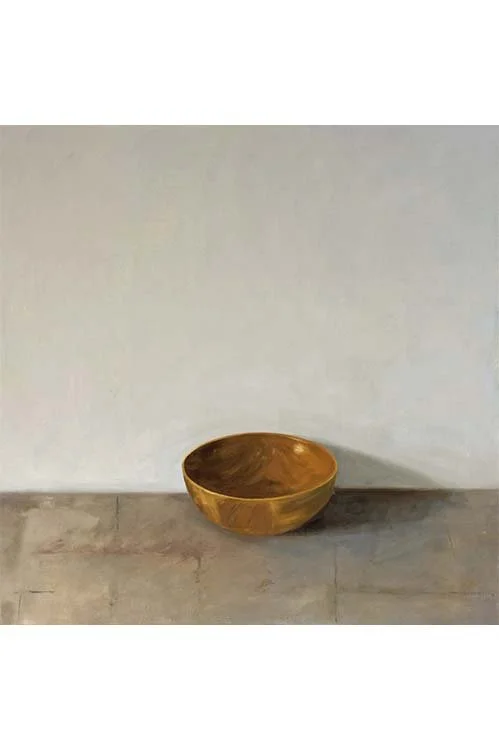 Image 1 of 7
Image 1 of 7

 Image 2 of 7
Image 2 of 7

 Image 3 of 7
Image 3 of 7

 Image 4 of 7
Image 4 of 7

 Image 5 of 7
Image 5 of 7

 Image 6 of 7
Image 6 of 7

 Image 7 of 7
Image 7 of 7








Color Worlds: Light and Temperature (Online Workshop) Winter 2026 w/ Samantha Haring
February 7 to February 21 (Saturdays), 10:00 AM to 1:00 PM, Eastern Time
**All sessions are live and will be recorded, students do not have to be present. All recordings will be available to students for 3 months after the final session, after 3 months the recording will be deleted.
Please check your email spam/junk folder for your Zoom invite. Our business hours are 10:00 AM through 5:00 PM. All course information and email correspondence will be sent during business hours. If students purchase a course, workshop, demo or recording outside business hours or during the weekend the course information or recording will be sent the following business day.
DEMO: https://youtu.be/7JC2eOA3PRE
Workshop Description
Color is an incredibly powerful element of art. It can set the tone in painting, create a charged sense of atmosphere, and change the way we perceive everyday objects. By focusing on temperature and value, we can create color worlds grounded in reality that have an emotional resonance all their own. Through a series of guided exercises, we’ll look at how shifting tonal relationships allow you to alter the mood and meaning of a painting.
This course will cover color mixing with limited palettes, using color studies to plan longer paintings, and experimental strategies for changing the way you think about color in your own studio practice.
Workshop Outline
Week 1: Mixing color with a limited palette, color studies for composition
Week 2: Reversing color relationships, color studies for mood
Week 3: Selecting a color study and making a resolved painting based on that palette
Workshop Materials List
Suggested colors: Titanium White, Bismuth Yellow, Cadmium Yellow Medium, Yellow Ochre, Cadmium Orange Deep, Cadmium Red Light, Quinacridone Red, Ultramarine Blue, Cobalt Blue, Sap Green, Viridian, Raw Umber
Any basic double primary palette will work well. You are more than welcome to supplement these with any colors that you use regularly.
I’ll be demoing with oils, but please feel free to use whatever kind of paint you prefer.
Whenever possible, choose artist grade paints and avoid anything that says “hue”.
Brushes: A range of sizes in flats and rounds (at least one small, medium, and large is a good place to start)
Palette with enough surface area to mix a range of colors and values (16x20” is a good size)
Palette knife for mixing color on the palette
Enough ready-to-paint surfaces to make 6 small color studies (6-8” each) and at least one larger, resolved painting. One sheet of 22x30” arches oil paper will be plenty (this is what I’ll be using for demos). Any surfaces you prefer (canvas, panel, linen, etc) are perfectly fine.
February 7 to February 21 (Saturdays), 10:00 AM to 1:00 PM, Eastern Time
**All sessions are live and will be recorded, students do not have to be present. All recordings will be available to students for 3 months after the final session, after 3 months the recording will be deleted.
Please check your email spam/junk folder for your Zoom invite. Our business hours are 10:00 AM through 5:00 PM. All course information and email correspondence will be sent during business hours. If students purchase a course, workshop, demo or recording outside business hours or during the weekend the course information or recording will be sent the following business day.
DEMO: https://youtu.be/7JC2eOA3PRE
Workshop Description
Color is an incredibly powerful element of art. It can set the tone in painting, create a charged sense of atmosphere, and change the way we perceive everyday objects. By focusing on temperature and value, we can create color worlds grounded in reality that have an emotional resonance all their own. Through a series of guided exercises, we’ll look at how shifting tonal relationships allow you to alter the mood and meaning of a painting.
This course will cover color mixing with limited palettes, using color studies to plan longer paintings, and experimental strategies for changing the way you think about color in your own studio practice.
Workshop Outline
Week 1: Mixing color with a limited palette, color studies for composition
Week 2: Reversing color relationships, color studies for mood
Week 3: Selecting a color study and making a resolved painting based on that palette
Workshop Materials List
Suggested colors: Titanium White, Bismuth Yellow, Cadmium Yellow Medium, Yellow Ochre, Cadmium Orange Deep, Cadmium Red Light, Quinacridone Red, Ultramarine Blue, Cobalt Blue, Sap Green, Viridian, Raw Umber
Any basic double primary palette will work well. You are more than welcome to supplement these with any colors that you use regularly.
I’ll be demoing with oils, but please feel free to use whatever kind of paint you prefer.
Whenever possible, choose artist grade paints and avoid anything that says “hue”.
Brushes: A range of sizes in flats and rounds (at least one small, medium, and large is a good place to start)
Palette with enough surface area to mix a range of colors and values (16x20” is a good size)
Palette knife for mixing color on the palette
Enough ready-to-paint surfaces to make 6 small color studies (6-8” each) and at least one larger, resolved painting. One sheet of 22x30” arches oil paper will be plenty (this is what I’ll be using for demos). Any surfaces you prefer (canvas, panel, linen, etc) are perfectly fine.
